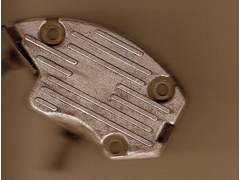
K series alternator
Lightning - 26/3/08 at 08:48 PM
Can anyone confirm which wires go to what on the alternator on the K series?
This is in our mini. It didnt have an alternator as it was only used for hill climbs. We want to use one for track days. There are three wires. I
think the large two should be joined together and back to the +ve. I think the small third one is for the ignition light. Or am I talking out my
bottom????
Oh whilst Im on the electrics. The pulse for the rev counter...should this be on the +ve side of the coil
???
Thanks in advance
Dusty - 26/3/08 at 09:27 PM
Rev counter reads off the negative side of the coil (ie the side switched by the points/amp/ecu etc). Can't help with the alternator.
Griffo - 26/3/08 at 11:25 PM
which K series is it, an 8 or 16 valve? i have my haynes manual in the car, i can go have a look for you if you let me know.
Griffo - 27/3/08 at 12:25 AM
this may not be very helpful but...
in normal use there is a brown cable going to the engine compartment fuse box, a brown and yellow going to the passenger compartment fusebox and it is
earthed through fixing point.
thats according to RAVE (might be worthwhile you getting a copy, there is usually one or two floating around the internet if you know where to
look).
if that didnt help let me know anf i'll see what i can do.
britishtrident - 27/3/08 at 07:26 AM
quote:
Originally posted by Lightning
Can anyone confirm which wires go to what on the alternator on the K series?
This is in our mini. It didnt have an alternator as it was only used for hill climbs. We want to use one for track days. There are three wires. I
think the large two should be joined together and back to the +ve. I think the small third one is for the ignition light. Or am I talking out my
bottom????
Oh whilst Im on the electrics. The pulse for the rev counter...should this be on the +ve side of the coil
???
Thanks in advance
Yes -- standard Lucas Alternator wiring if you have the early K series Lucas-Magnetti Marelli alternator with the 3 terminal plug block.
Later K series used an entirely different system.
Lightning - 27/3/08 at 09:01 AM
Thanks for your help. Have tried it but does not appear to charge as the voltage is the same across the battery when the thing is running. Could be a
dodgy alternator? The engine is 16v. We have a Rolling road readout at 140bhp...at the wheels. Much work and money was injected by the original
builder.
britishtrident - 27/3/08 at 03:53 PM
Four different faults tend to occur with these alternators.
(1) Brush wear
(2) Regulator failure
[ (1) & (2) can both be cured by fitting new regulator brush box assembly see picture.]
(3) Diode Failure --- may show charging voltage but battery quickly flattens because of reverse current flow.
[Cure new/exchange alternator]
[4] Breaking of rotor winding wire due to fatigue failure where winding enters crimp connector at slip ring this can sometimes be fixed with
careful re-crimpling & soldering.
This fault tend to occur more on engines subject to high revs which subject the winding to increased centrafugal force and vibration.


Rescued attachment image0.jpg


